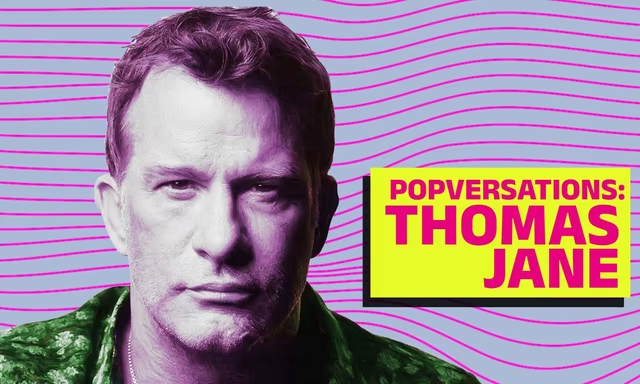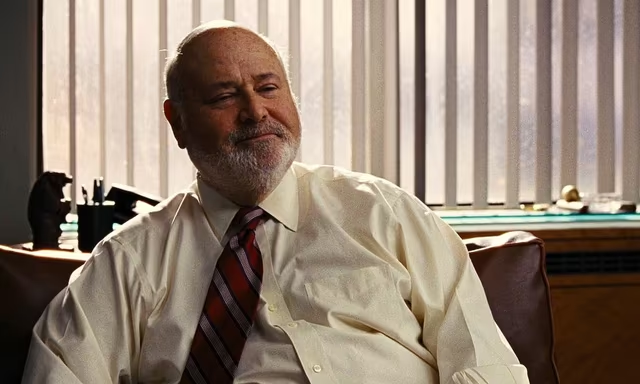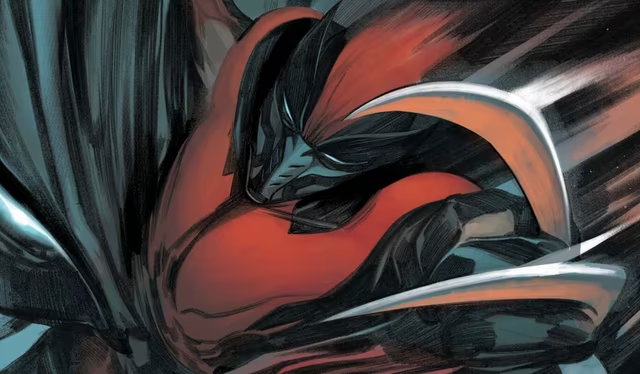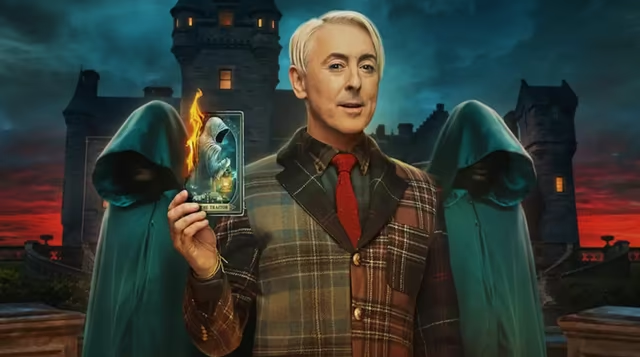If you click on a link and make a purchase we may receive a small commission. Read our editorial policy.
This Month in Comics History: Mephisto grants Peter Parker One More Day
Not to mention the first openly lesbian character in comics turns 50

Remember, remember, of past years’ Novembers, the comics of art and of plot. I see no reason the November season should ever be forgot.
Welcome back to This Month in Comics History, our monthly examination of where we were at this point in time five, ten, fifteen, twenty, and more years ago in the history of the sequential art medium. It may seem like only yesterday to some of us that Geoff Johns and Gary Frank were sequelizing Watchmen; or when Dr. Octavius assumed the mantle of the Superior Spider-Man; or when Peter Parker sacrificed his marriage to save his Aunt May. (Some have even spent the past 15 years trying to take that choice back.)
But at Popverse, we’re here to provide comic readers old and new alike with a little bit of perspective. Don’t lament that you’re getting older; join with us and celebrate the milestones in comics that we all experienced together.
5 YEARS AGO: NOVEMBER 2017

- Scott Snyder and artist Jock begin a seven issue miniseries dedicated to the breakout villain of the Dark Nights: Metal event, the Batman/Joker hybrid known as The Batman Who Laughs. In the spirit of the ‘Dark Knight’ mash-ups which inspired its title character, the book also introduces a menacing amalgamation of Batman and Marvel’s Punisher: The Grim Knight.
- Geoff Johns and Gary Frank present Doomsday Clock, an ambitious sequel to Alan Moore and Dave Gibbons’ Watchmen which brings the original book’s surviving characters in touch with the DC Universe. The goal of the series, in addition perhaps to garner big media attention, is to foster conversation about how the original story’s deconstruction of the superhero genre stands against the modern state of DC Comics. Whether it’s brilliant or blasphemy remains subjective.
- Kurt Busiek publishes the first issue of his thematic follow-up to Superman: Secret Identity, Batman: Creature of the Night. Like its spiritual predecessor, the comic is set in a world where Batman is a fictional character, but who nevertheless inspires the story’s protagonist. In addition to being one of the most thoughtful comics ever produced on the meaning of Batman as a symbol, the series also stands as a magnum opus of the comic’s illustrator, John Paul Leon.
- The web manga Don’t Toy With Me, Miss Nagatoro by 774 debuts online. It’s hard to describe this one – it’s basically a story about falling in love with your high school bully, who happens to be a cute girl. (It’s also about how bullies are often in a position where they do not feel comfortable expressing their own feelings outside of the medium of bullying.) It’s been adapted into an outrageously popular anime. At one point she describes something as “sus,” which was considered a really big deal at the time.
- Black Lightning creator Tony Isabella returns to his most famous hero for the first (and, to date, final) time since 1995 with Black Lightning: Cold Dead Hands.
10 YEARS AGO: NOVEMBER 2012

- A dying Dr. Otto Octavius transfers his own mind into Spider-Man’s body in Amazing Spider-Man #698. The Superior Spider-Man is born.
- The Marvel NOW! publishing initiative relaunches Captain America, Fantastic Four, Iron Man, Marvel: Legacy, Deadpool, and many others at issue #1 for new reader-friendly jumping on points.
- Dynamite Entertainment presents MASKS, an eight-issue crossover story featuring classic pulp heroes like Green Hornet, The Shadow, The Spider, Zorro, and more. Together, they depose a powerful, corrupt political party sweeping America in 1938.
- Yūto Tsukuda and Shun Saeki’s Food Wars!: Shokugeki no Soma begins serialization in Weekly Shonen Jump, a manga following hopeful chefs at an elite culinary school. The story’s drama and social dynamics are enhanced by its inclusion of actual recipes that readers can make in their own kitchens alongside the characters. The subsequent popularity of Food Wars! has garnered it a spin-off manga, two video games, and and anime series which was eventually picked up by Adult Swim.
- IDW begins publishing under a license for British sci-fi comic magazines 2000AD’s Judge Dredd. They begin with an original Judge Dredd series, initially with a creative team of Duane Swierczynski and Nelson Daniel, which lasts for 30 issues. IDW would produce 60 more original issues through various miniseries, bringing their original Judge Dredd output to a total of 90 issues by the time they terminated their licensing deal in 2020. Perhaps most importantly, during this time IDW would publish 19 collected editions of the ‘Classic’ Judge Dredd stories from 2000AD, in color for the first time.
15 YEARS AGO: NOVEMBER 2007

- In Sensational Spider-Man #41, the 'One More Day' storyline reaches its highest stakes when the Mephisto offers Peter Parker a choice: the life of his Aunt May, or his marriage to Mary Jane.
- In a story originally pitched to DC by George R.R. Martin, Earth’s supervillains are rounded up and abandoned on a deserted alien world and left to fend for themselves in Salvation Run.
- Weekly Young Jump begins publishing Kokou no Hito, or ‘The Climber.’ It’s a stirring semi-biographical manga based on a novel by Jirō Nitta about the lifelong pursuit of climbing as a sport, in preparation to summit K2.
- ‘World War Hulk’ comes to its climactic conclusion with a battle between The Hulk and The Sentry at their full power.
- Hope Summers, the first new mutant after M-Day, is born in X-Men #205.
20 YEARS AGO: NOVEMBER 2002

- The first US volume of Shonen Jump makes its debut in circulation by Viz Media. It includes the first chapters of Yu-Gi-Oh!, SandLand, Yu Yu Hakusho, One Piece, and chapters 328-330 of Dragon Ball (‘Namek’s End,’ ‘Where is Goku?,’ ‘The Coming of King Cold’).
- The first issue of Kevin Smith and Glenn Fabry’s miniseries Daredevil/Bullseye: The Target is released, a 9/11-inspired story where Daredevil must prevent the assassin Bullseye from completing a mystery contract. 20 years later, we’re still waiting for issue two.
- Grant Morrison’s Omega Level Telepath and cheeky little bastard Quentin Quire makes his debut in New X-Men #134.
- We meet Batman’s childhood friend Thomas Elliot for the first time in the second issue of Jeph Loeb and Jim Lee’s 'Hush,' Batman #609.
- Inspired by the Tuskegee Study, Marvel publishes Truth: Red, White, and Black, the story of Isaiah Bradley – an African American soldier experimented on by the US army in their attempts to recreate Captain America’s super soldier formula.
25 YEARS AGO: NOVEMBER 1997

- Captain America and Fantastic Four are both relaunched as part of Marvel’s ‘Heroes Reborn’ initiative. This follows the previous month’s relaunch of Iron Man and Avengers, as part of an experimental collaboration farming out some of Marvel’s biggest titles to some of their own veterans now working for other studios. Jim Lee’s WildStorm Productions would handle Iron Man and Fantastic Four, while Rob Liefeld’s Extreme Studios would handle Avengers and Captain America. Citing low sales, Liefeld’s series would be transferred to WildStorm after 6 issues, with all four series coming to an end at issue 13.
- Mark Waid, Brian Agustyn, and Barry Kitson present JLA: Year One, telling the Post-Crisis origins for the first time of the Justice League of America born before Superman, Batman, or Wonder Woman would be charter members.
- Vertigo publishes a prestige Uncle Sam miniseries by Steve Darnall and Alex Ross, reviving the classic Quality Comics hero through examination of the iconography of America in an increasingly cynical nation.
- WildCATS member Voodoo gets her own four issue series.
- D.N.Angel by Yukiru Sugisaki debuts in shojo magazine Monthly Asuka. The series (which follows middle school student Daisuke Niwa who adopts a dark alternate persona after suffering heartbreak) was an international hit and played a significant role in the rise of manga’s popularity in the west.
50 YEARS AGO: NOVEMBER 1972

- The underground feminist anthology Wimmen’s Comix begins publication. The debut issue features the story ‘Sandy Comes Out’ by Trina Robbins, the first comic strip featuring an open lesbian character.
- Nubia, Wonder Woman’s twin sister and rightful champion of the Amazons, is introduced in Wonder Woman #204. Though she would remain an obscure footnote for decades afterwards, Nubia has since experienced a resurgence of popularity and significance in the Wonder Woman mythology in recent years.
- In Marvel’s Conan the Barbarian #23, Roy Thomas and Barry Windsor-Smith introduce the most enduring character in Conan’s world since the original Robert E. Howard pulp stories – the she-devil with a sword, Red Sonja.
- In Marvel’s Defenders #4, an original character is introduced to the group of Namor, Doctor Strange, and The Hulk – the warrior princess Brunnhilde, better known today as Valkyrie.
- With Teen Titans #43, the original Teen Titans series enters a hiatus of nearly four years. It would return in 1976, with Mal Duncan joining the team full time as Guardian.
75 YEARS AGO: NOVEMBER 1947

- Dell Comics grants the mischievous comic strip character Little Lulu her own ongoing comic book series. Marge’s Little Lulu, named for strip creator Marjorie ‘Marge’ Buell, would run continuously for 268 issues until 1984, when Dell’s parent company Western Publishing ceased their comics operation altogether.
- The Catechetical Guild Educational Society publishes an early graphic novel, Is This Tomorrow? It’s a story of anti-communism propaganda, stoking the fires of a cultural Cold War by imagining life in America under a Soviet regime should they go unchecked.
- DC begins publication of Western Comics, a western-themed anthology series which would run for 85 issues through 1960. During its run, Western Comics would introduce classic western heroes like Cowboy Marshal, Rodeo Rick, Matt Savage, The Wyoming Kid, and Nighthawk. If you’re a big DC history buff, you probably recognize one of those names. If you’re a REALLY big DC history buff, you might recognize two.
- As a telltale sign of the Caped Crusader’s rising popularity, Batman takes over from Superman for the first time as the top-billed hero in their shared magazine as of World’s Finest Comics #32.
- The invincible robot Mr. Atom is destroyed in his final Golden Age confrontation with Captain Marvel in Captain Marvel Adventures #81. He would not be seen again until Justice League of America #137, in 1976.
Check back next month as we wrap up our monthly retrospectives on 2017, 2012, 2007, 2002, 1997, 1972, and 1947 (until the next 5 years)! Coming up: the one hundredth birthday of a certain Stanley Lieber.
The complicated real world backstory of Marvel's Miracleman, explained
Follow Popverse for upcoming event coverage and news
Find out how we conduct our review by reading our review policy
Let Popverse be your tour guide through the wilderness of pop culture
Sign in and let us help you find your new favorite thing.
















Comments
Want to join the discussion? Please activate your account first.
Visit Reedpop ID if you need to resend the confirmation email.